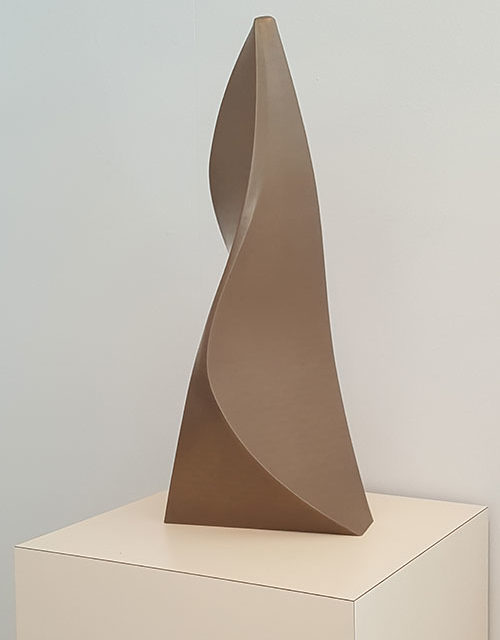Many sculptors work in bronze, but in my more than 10 years as a professional artist, I have worked in everything but. I have mostly fabricated in mild steel, but have also worked with stainless steel, Cor-ten (weathering) steel, aluminum, brass and copper.
Finally, with 3D printing, I have my first bronze! Well, it’s 80% bronze and 20% PLA, but the resulting print is clearly a different breed than the ABS and PLA filaments I usually print in.
For one thing, it’s noticeably heavier. Seeing as I’m printed just two or three layers thick, it’s amazing how much heavier these bronzes are than if they’d been printed in the filament I usually use.
(Of course, that gets my mind going … if I could print a solid bronze, how much would it weigh? How would it compare to the weight of a traditional poured bronze? And we’re off and running through the grassy fields of my mind ….)
One of the big differences is that the sculpture isn’t done once the printhead rises ….
I printed my first bronze on my Cerberus 250 3D printer, a small version of the form I call The Point. I’ve also since printed a larger version of The Point on my Cerberus Gigante 3D printer.
Once the print finished, it became clear immediately that I had some finish work in my future – the surface of the fresh bronzes looks almost like clay. I wrote about that in my last post, but I kept thinking there had to be an easier way ….
I knew about rock tumblers, but most of them are too small to be helpful, so I got on my favorite research tool, the Internet.
Much to my surprise, I found a larger tumbler that was 100 years old. (Yeah, there seems to be a theme here: using century old equipment to create my contemporary 3D printed sculptures!)
It isn’t large enough to tumble my 26″ tall bronze sculpture, but it sure worked beautifully for the smaller version.
There’s more of a story here, including the mystery behind the tumbler. I share it in my latest YouTube video, which I hope you now enjoy:

